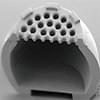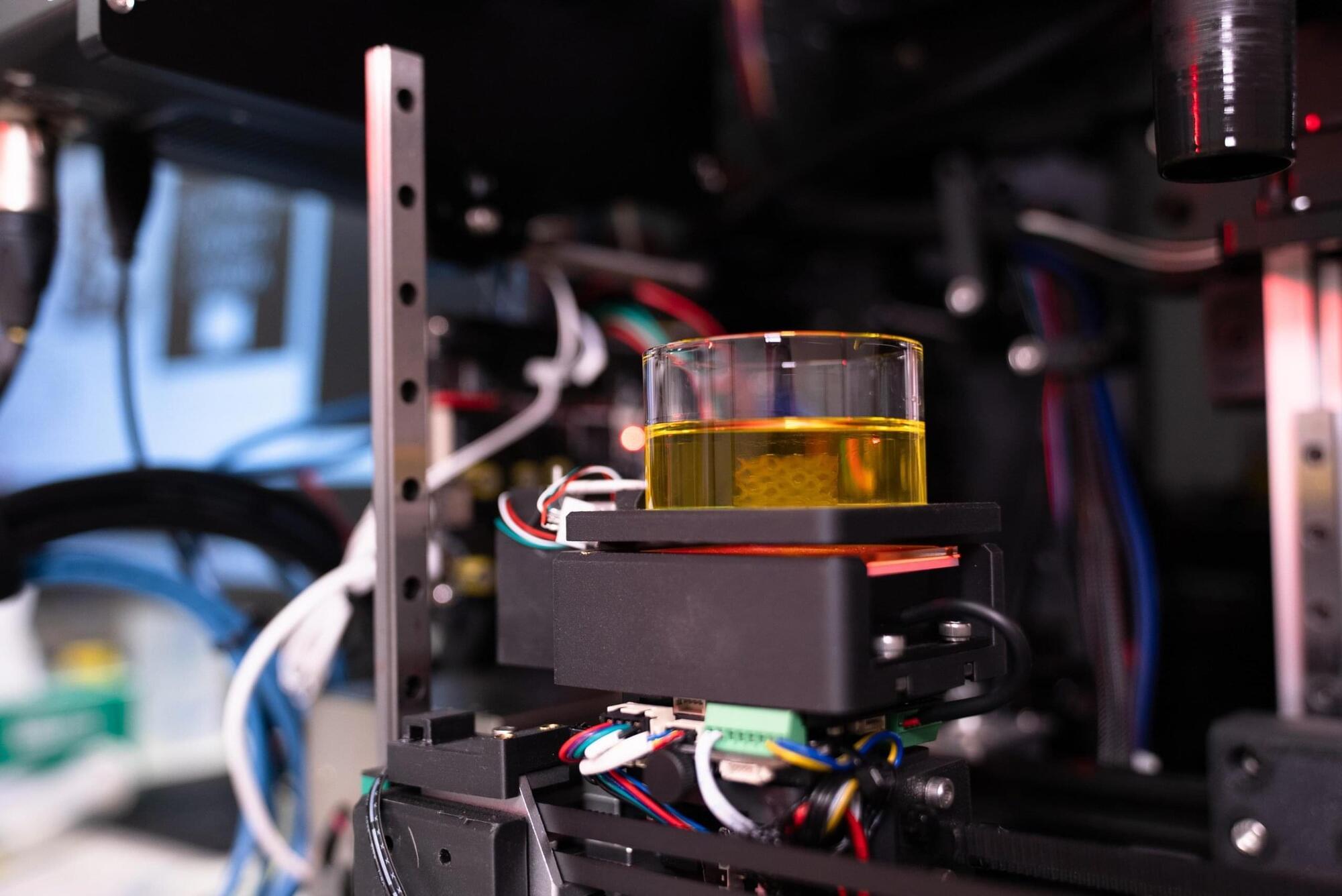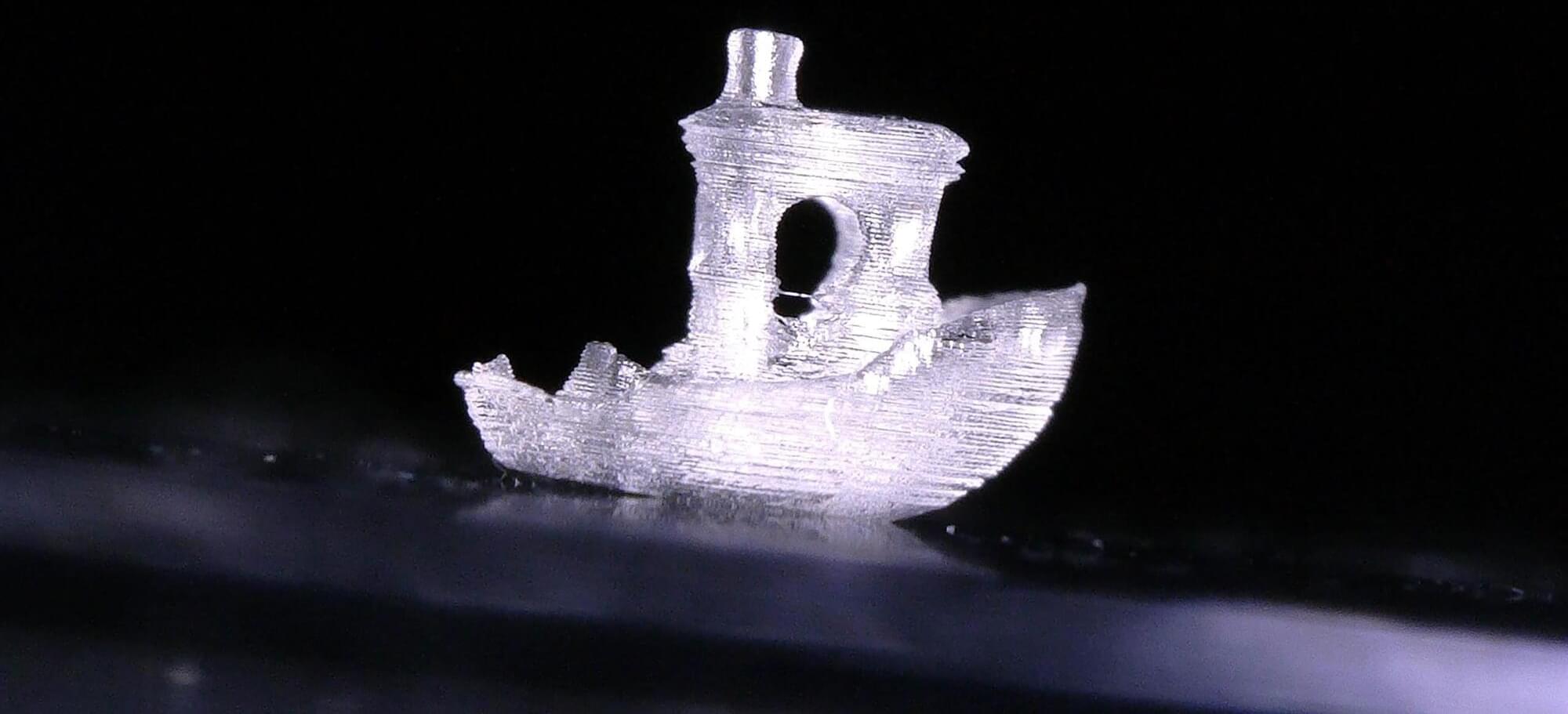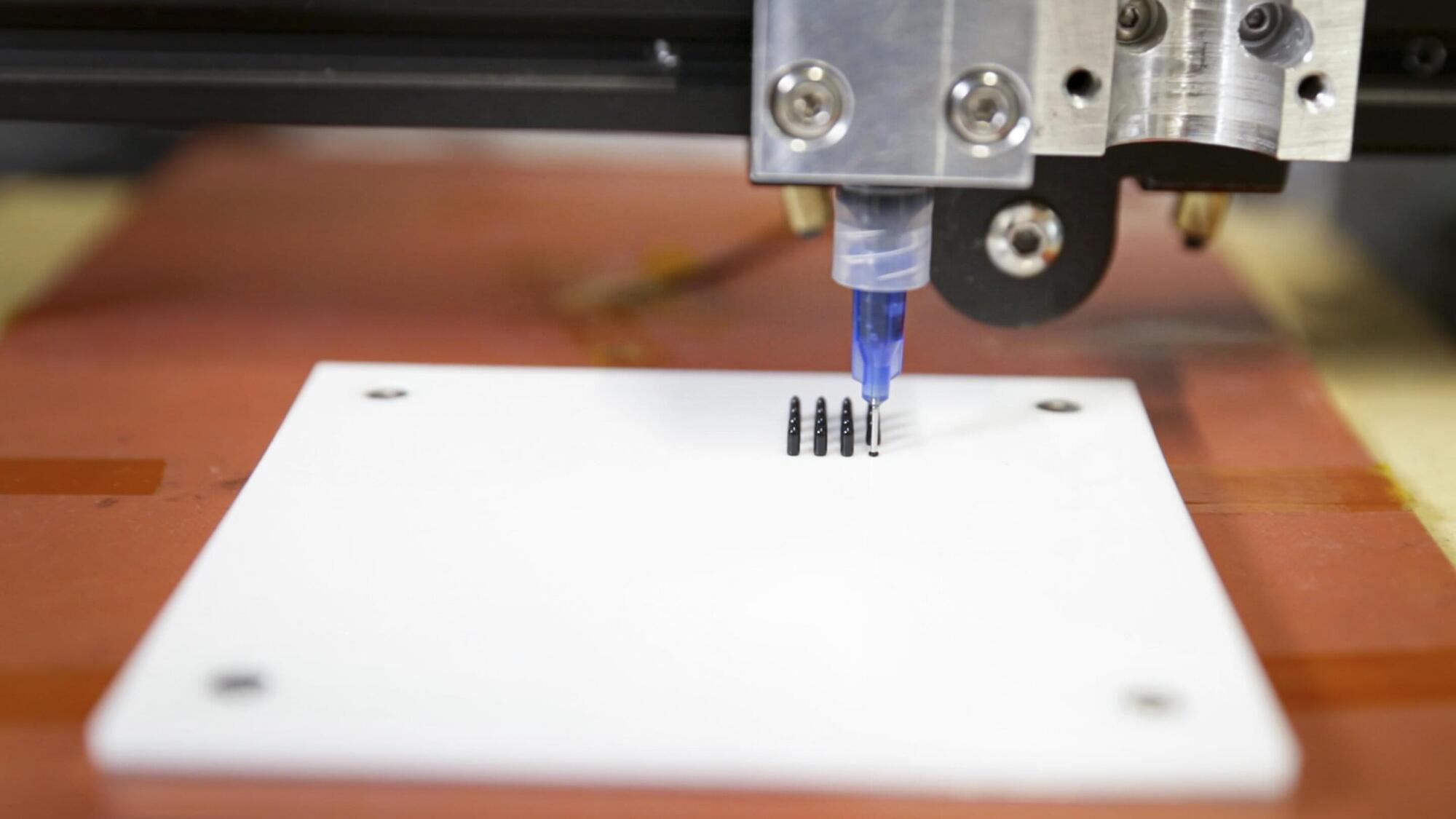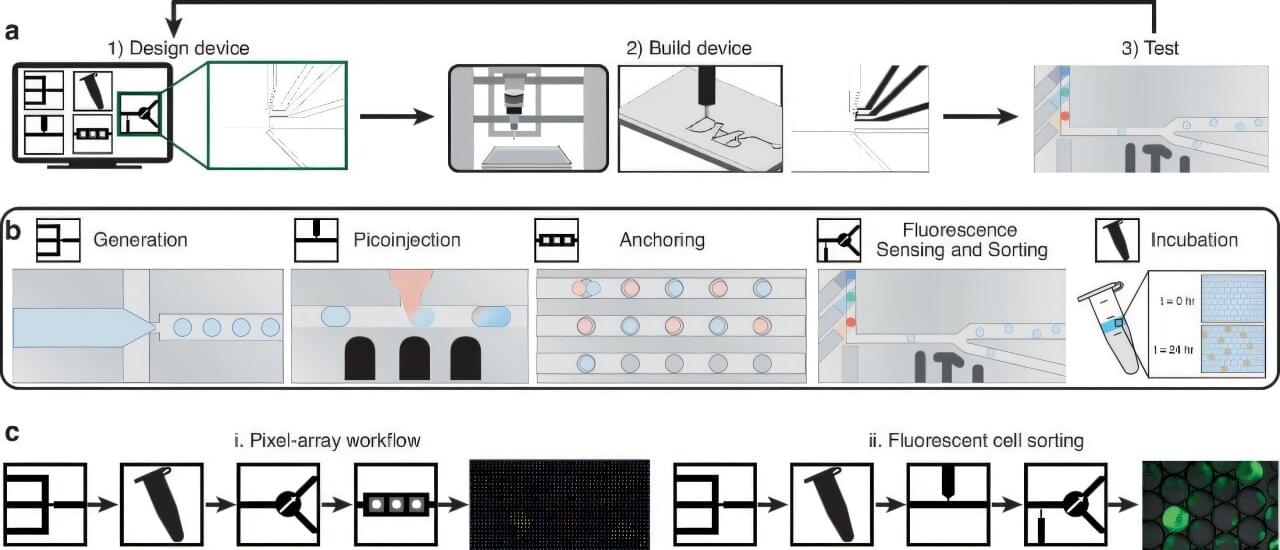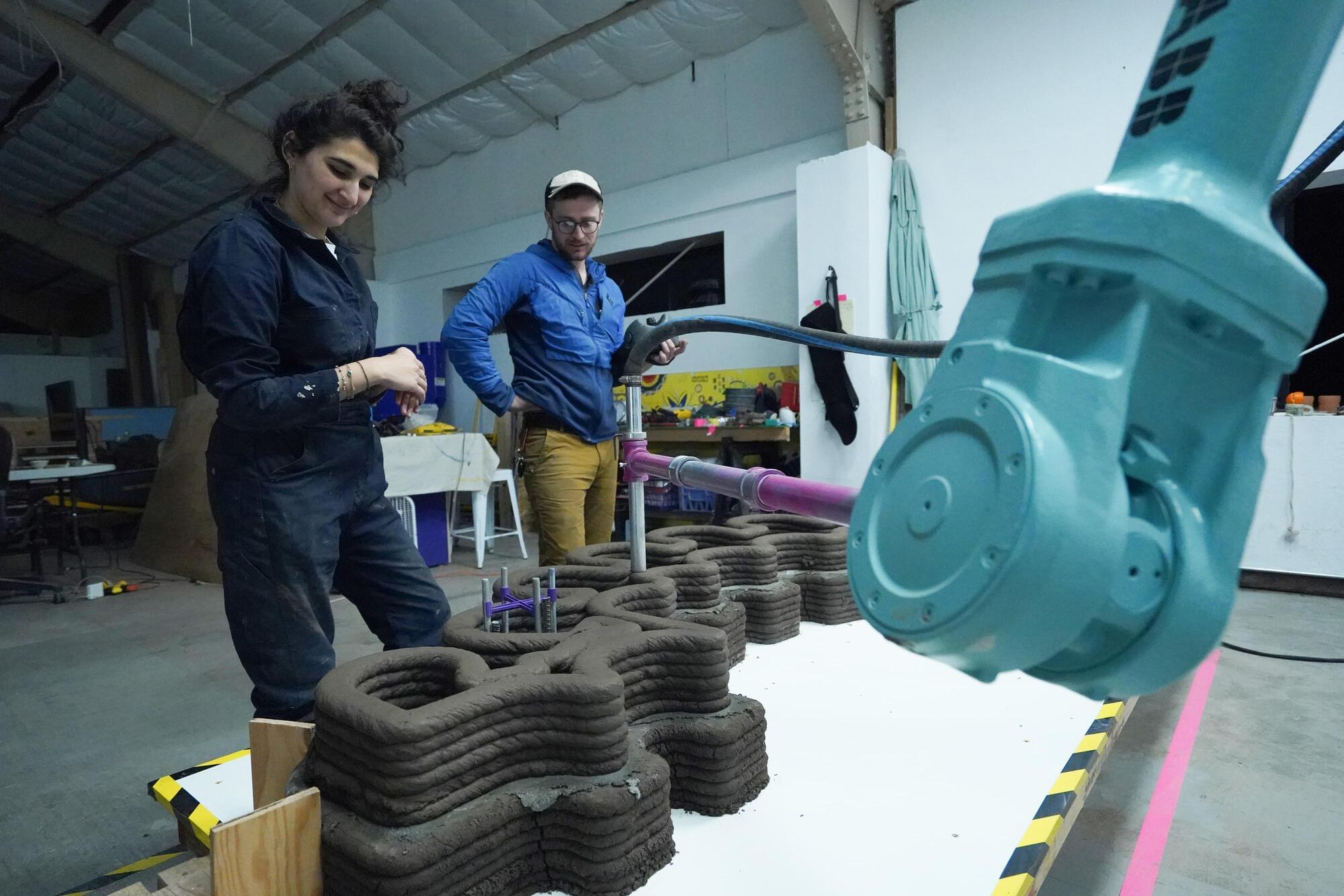Researchers develop nanoscale 3D printing method to create biodegradable vaccine carriers with controlled release.
Category: 3D printing – Page 3
Biomedical engineers at the University of Melbourne have developed a 3D bioprinting system capable of creating structures that closely replicate various human tissues, ranging from soft brain tissue to more rigid materials like cartilage and bone.
This innovative technology provides cancer researchers with a powerful tool for replicating specific organs and tissues, enhancing their ability to predict drug responses and develop new treatments. By offering a more accurate and ethical approach to drug discovery, it also has the potential to reduce reliance on animal testing.
Head of the Collins BioMicrosystems Laboratory at the University of Melbourne, Associate Professor David Collins said: In addition to drastically improving print speed, our approach enables a degree of cell positioning within printed tissues. Incorrect cell positioning is a big reason most 3D bioprinters fail to produce structures that accurately represent human tissue.
Growing organs in the Lab — Find out how scientists are making human organs in the lab from stem cells. While we can’t grow fully functional human organs yet, they can grow organoids from stem cells to study organ development and 3D bioprint tissues that can one day be used to repair organs.
👉 You may also like: The Basic Principles of a Cell, https://youtu.be/R5z0VYBnZPs.
📖 This video is also a blog post with images and a PDF Summary visit: https://www.clevalab.com/post/growingorgans.
Visit the ClevaLab Channel Page for more videos: https://www.youtube.com/@ClevaLab.
✉️ Sign up to the email list to be notified of new videos: https://www.clevalab.com/email-subscription.
Year 2024 😗
Modular tiles, 3D printed using sawdust leftover from CLT production, were joined together without additional fixings to create this pavilion showcased by Japanese firm Mitsubishi Jisho Design at Dubai Design Week.
The Warp is a teahouse pavilion developed by architects Kei Atsumi and Motoya Iizawa from Mitsubishi Jisho Design’s Tokyo headquarters, along with Singapore-based Vibha Krishna Kumar from Mitsubishi Jisho Design Asia.
The project showcases a production system developed by the architecture firm called Regenerative Wood, which uses a filament made from wood waste mixed with bioplastic to 3D print building components and furniture.
Traditional 3D printing builds objects layer by layer, but tomographic volumetric additive manufacturing (TVAM) takes a different approach. It uses laser light to illuminate a rotating vial of resin, solidifying material only where the accumulated energy surpasses a specific threshold. A key advantage of TVAM is its speed—it can produce objects in seconds, whereas conventional layer-based 3D printing takes about 10 minutes. However, its efficiency is a major drawback, as only about 1% of the projected light contributes to forming the intended shape.
Researchers from EPFL’s Laboratory of Applied Photonic Devices, led by Professor Christophe Moser, and the SDU Centre for Photonics Engineering, led by Professor Jesper Glückstad, have developed a more efficient TVAM technique, as reported in Nature Communications
<em> Nature Communications </em> is an open-access, peer-reviewed journal that publishes high-quality research from all areas of the natural sciences, including physics, chemistry, Earth sciences, and biology. The journal is part of the Nature Publishing Group and was launched in 2010. “Nature Communications” aims to facilitate the rapid dissemination of important research findings and to foster multidisciplinary collaboration and communication among scientists.
Scientists have developed a way to 3D-print high-performance thermoelectric materials, promising a major leap in cooling technology. This breakthrough could cut costs, reduce waste, and improve efficiency, challenging conventional manufacturing.
Researchers have developed a high-resolution embedded 3D-printing technique that enables the fabrication of ultra-fine fibers, mimicking nature’s structures. Using a solvent exchange process, they achieved unprecedented resolutions of 1.5 microns, unlocking new possibilities for bioinspired materials and advanced engineering applications.
Researchers have been exploring new methods to produce and replicate the diverse and valuable features found in nature. Fine hairs and fibers, which are ubiquitous in the natural world, serve various purposes, from sensory functions to contributing to the unique consistency of hagfish slime.
MechSE Professors Sameh Tawfick and Randy Ewoldt, along with doctoral candidate M. Tanver Hossain and external collaborators, have addressed this need using their advanced embedded 3D-printing technique, recently published in Nature Communications.
A recent study published in Science by a Belgian research team investigates how genetic switches that regulate gene activity define brain cell types across different species.
A species is a group of living organisms that share a set of common characteristics and are able to breed and produce fertile offspring. The concept of a species is important in biology as it is used to classify and organize the diversity of life. There are different ways to define a species, but the most widely accepted one is the biological species concept, which defines a species as a group of organisms that can interbreed and produce viable offspring in nature. This definition is widely used in evolutionary biology and ecology to identify and classify living organisms.
Researchers have developed a freely available droplet microfluidic component library, which promises to transform the way microfluidic devices are created. This innovation, based on low-cost rapid prototyping and electrode integration, makes it possible to fabricate microfluidic devices for under $12 each, with a full design-build-test cycle completed within a single day. The components are biocompatible, high-throughput, and capable of performing multistep workflows, such as droplet generation, sensing, sorting, and anchoring, all critical for automating microfluidic design and testing.
Microfluidics, particularly droplet-based systems, has become a promising technology for diverse fields, including protein engineering, single-cell sequencing, and nanoparticle synthesis. However, the traditional methods of fabricating microfluidic devices —typically using PDMS (polydimethylsiloxane)—are time-consuming and costly, often requiring cleanroom facilities or external vendors.
While alternatives like laser cutting and 3D printing have been explored, these methods often suffer from limitations in resolution, material compatibility, and scalability. As a result, there has been an urgent need for a more efficient, cost-effective, and accessible fabrication method to help propel innovation in microfluidic technology.
Buildings cost a lot these days. But when concrete buildings are being constructed, there’s another material that can make them less expensive: mud.
MIT researchers have developed a method to use lightly treated mud, including soil from a building site, as the “formwork” molds into which concrete is poured. The technique deploys 3D printing and can replace the more costly method of building elaborate wood formworks for concrete construction.
“What we’ve demonstrated is that we can essentially take the ground we’re standing on, or waste soil from a construction site, and transform it into accurate, highly complex, and flexible formwork for customized concrete structures,” says Sandy Curth, a PhD student in MIT’s Department of Architecture who has helped spearhead the project.
